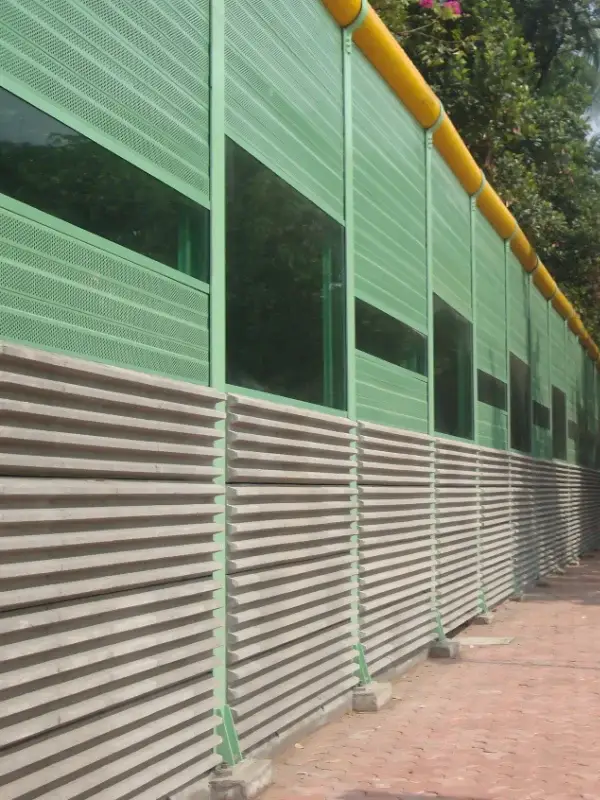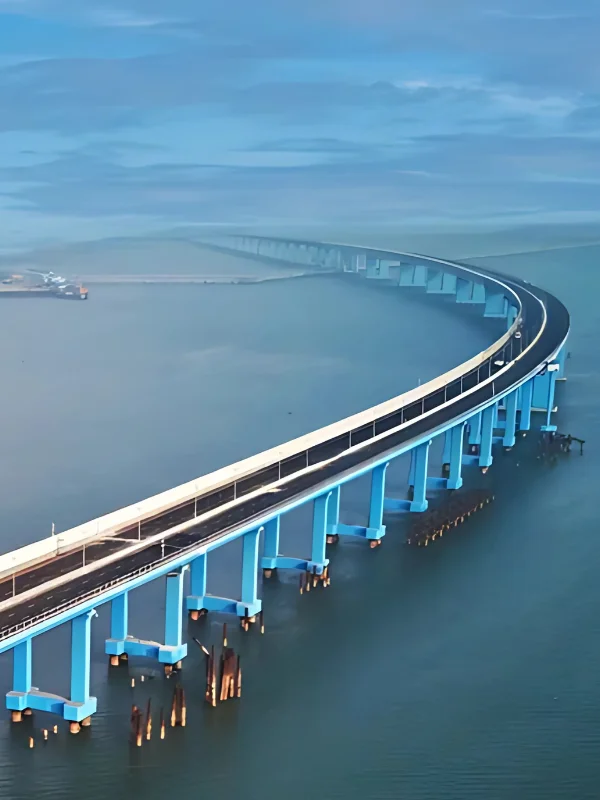Noise Barriers
At Metalmeccanica, we take pride in offering a comprehensive range of cutting-edge products tailored to meet diverse infrastructure demands. We are India’s first manufacturer of absorptive noise barriers designed to effectively reduce noise pollution in urban and industrial environments.
Crafted with advanced materials and precision engineering, our noise barriers provide long-lasting performance with superior noise insulation and structural durability. Our solutions are designed to prioritise safety and sustainability for modern infrastructure projects.
Types of Noise Barriers
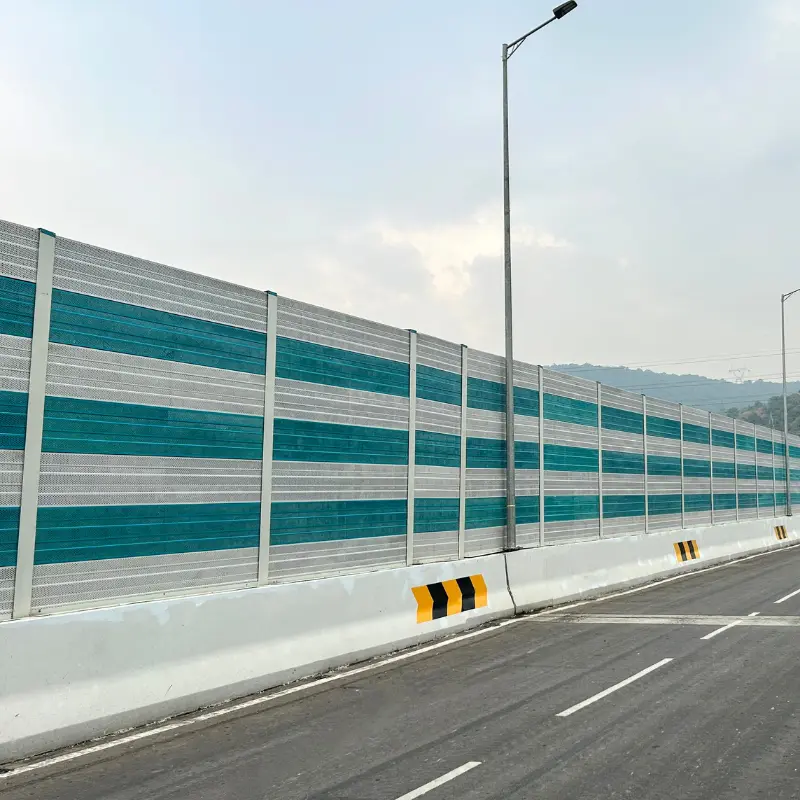
Absorptive Noise Barriers
Absorptive noise barriers minimise noise pollution by absorbing sound waves, ideal for highways and industrial areas.
Parametres
- Application: Commonly used in high-noise areas like highways, railways and industrial sites. They work by absorbing sound waves and minimising noise reflection.
- Functionality : This makes them highly effective at reducing noise pollution, and they are often constructed with eco-friendly materials.
Types of Absorptive Noise Barriers
| Parametres | Mono Absorbent Noise Barrier | Bi-Absorbent Noise Barrier |
|---|---|---|
| Applications | Designed to absorb sound waves from one side, ideal for urban highways and industrial zones. | Absorbs sound from both sides, suitable for high-traffic areas like busy highways and railways. |
| Materials Used | Cost-effective with simple installation, made from perforated aluminium and rock wool core. | Provides superior noise reduction using dual-layered absorptive panels for maximum performance. |
Reflective Noise Barriers
These barriers reflect sound waves, reducing noise levels in residential, urban and commercial environments.
Parametres
- Application: Common in urban zones, residential areas and highways. They function by reflecting sound waves to the source or in other directions.
- Functionality : While durable, they may not contribute to noise absorption, only deflection.
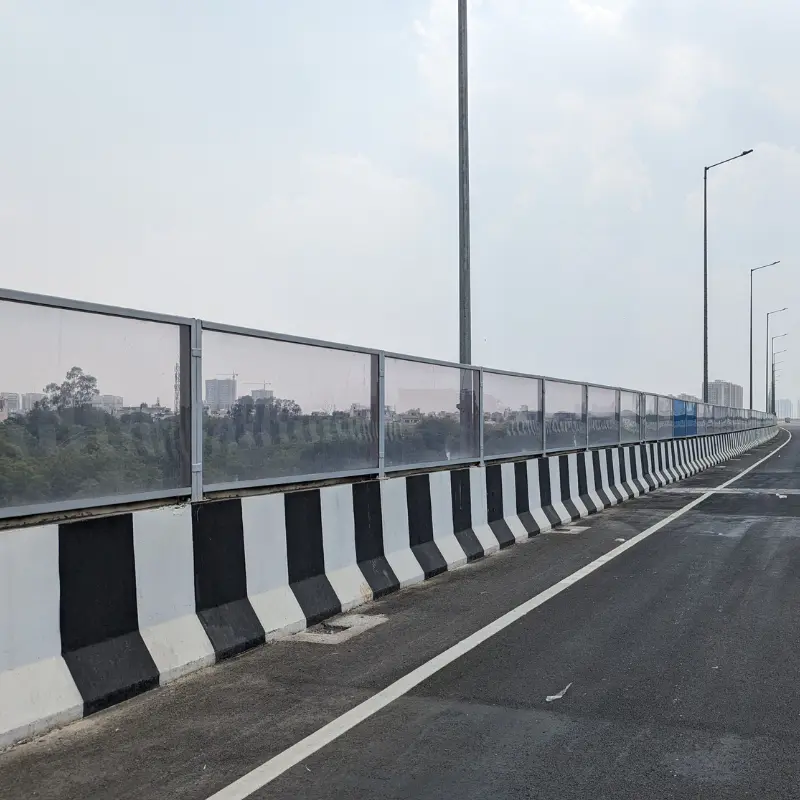
Types of Reflective Noise Barriers
| Parametres | View Barriers | Barriers with PC Sheets |
|---|---|---|
| Functionality | Limits visibility to enhance privacy while allowing airflow and light in specific areas. | Reduces noise pollution while maintaining scenic views and breaking the monotony with durable, transparent polycarbonate sheets. |
| Applications | Commonly used in urban areas, highways, and industrial zones to improve aesthetics and functionality. | Ideal for residential areas, highways or commercial zones. They also provide UV protection and are ISO 9001:2000 certified. |
Why Choose Our Noise Barriers?
Our noise barriers reduce sound pollution and enhance safety
with customised solutions for urban, industrial and road
applications.

Roadway Safety

Eco-Friendly

Durable Solutions

Aesthetic Appeal

Customisable Options

Effective Noise Control
Product Specifications
| Certifications | |
|---|---|
| Certifications : | ISO 9001:2015 certified; ARAI tested for quality. |
| International Certifications : | Conforms to EN 1793, EN 1794, EN 1317 |
| Materials Used for Manufacturing : | Perforated aluminium sheets, rock wool and polycarbonate for transparency. |
| Panel Design : | Mono and dual absorbent options; 100 mm panel thickness. |
| Sound Reduction : | Weighted sound reduction index Rw: 31(0;-5) dB. |
| Coating : | Hot-dip galvanised (70-micron) epoxy primer and two coats of epoxy paint. |
| Applications : | Urban areas, highways, railways, industrial zones and educational facilities. |
| Customisation : | Tailored designs for functional and aesthetic requirements. |
| Environmental Impact : | Eco-friendly, durable and sustainable materials. |
Our Process
Experience our meticulous approach to building effective, tailored noise control solutions.
Site Analysis
Evaluation of noise levels and sources at the site using Measurements, Monitoring and Propagation Models.
Designing Noise Barrier
Based on the noise levels and other requirements, selection of appropriate materials and dimensions.
Project Execution
Ensuring professional installation and compliance with the required norms. Verifying results after installation.
